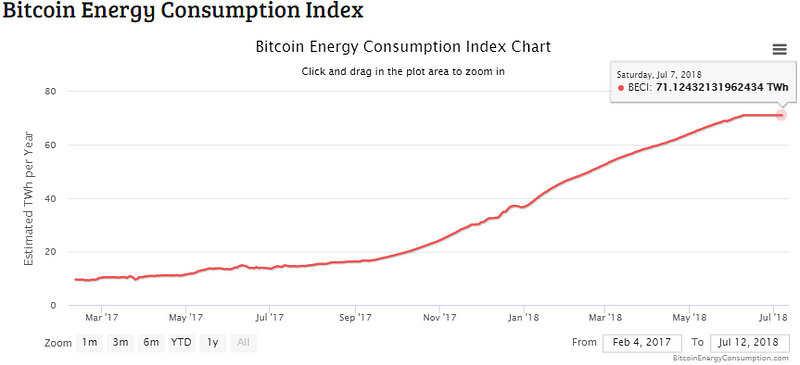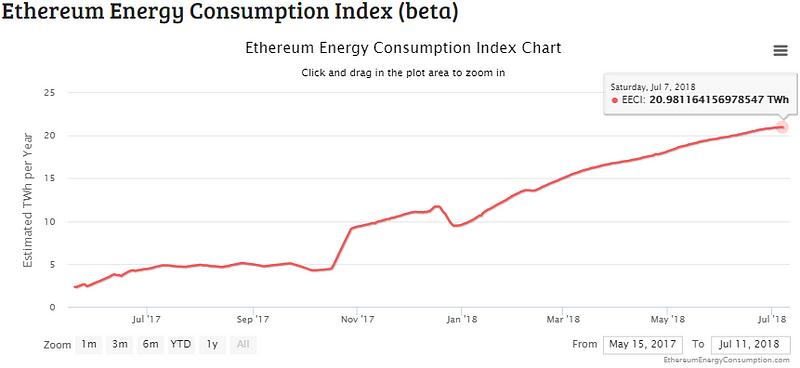
A rise in the number of cryptoasset users, traders and investors translate into an increasing demand for crypto mining. This is an energy-intensive procedure that consumes a significant amount of electricity. Currently, most of the available electricity is produced from fossil fuels due to which crypto mining is also contributing to global climate change.
The unsustainable nature of energy consumption in the cryptoasset world is alarming. Large mining rigs are set up in countries with a cheap and reliable source of electricity. Colder climates attract more mining rigs because low temperatures reduce the need for extra power required to cool the hardware. These mining rigs utilize large portions of the available electricity of an area, leading to price hikes which ultimately creates a problem for the localities.
Most cryptoassets in the world use Proof-of-Work based consensus protocol. In a PoW based system, each new block on the blockchain is validated by solving a mathematical puzzle. The miner who solves the puzzle first is rewarded with units of that particular cryptoasset. For each block, multiple miners compete to validate it first. This means that a lot of computational power is used for validating each block. As the value of the asset rises, miners are incentivised to use more electricity and hardware to earn the most rewards. With each new block, the mathematical puzzle continues to get more complex. The result is: an enormous amount of electricity is wasted! Although the PoW protocol makes the blockchain secure from hackers, its energy consumption levels make it an unsustainable business model.
Also Read: 7 Fields Where Blockchain has Changed The Day to Day
Bitcoin is the biggest name among all cryptoassets that use the PoW protocol. According to Digiconomist’s estimate, its power consumption is growing every day. As of July 7, 2018, Bitcoin uses 71.12 TWh per year.

The annual carbon footprint of Bitcoin is 34,851 K. The energy used in Bitcoin mining is close to Chile’s energy consumption and is higher than most African nations.
Ethereum, the second largest cryptoasset, is considering a switch to a PoS model. In the PoS system, a block is validated by the forger who has the highest number of stacked coins. This allows for a faster and much more energy efficient system. The PoS algorithm is a greener way to maintain a blockchain. Still, Ethereum’s energy consumption index is 20.98 TWh per year.

It is estimated that soon Bitcoin will consume about 0.5% of the world’s total electricity. If the energy consumption by other cryptoassets is also added the figures will rise much higher. It is essential that cryptoassets use cleaner forms of energy like hydropower, solar power etc. HydroMiner is one such crypto mining company which uses hydroelectricity for its mining operations. A cryptoasset named SolarCoin was launched in 2014 which incentivises people to produce solar electricity by rewarding one coin for every 1-megawatt hour of electricity. Other alternatives include transitioning to a Proof-of-Stake or Proof-of-Space protocol like DASH and Chia Network respectively.
Also Read:
https://blog.unocoin.com/how-does-a-crypto-charity-work-without-a-bank-account-6764807167c3



